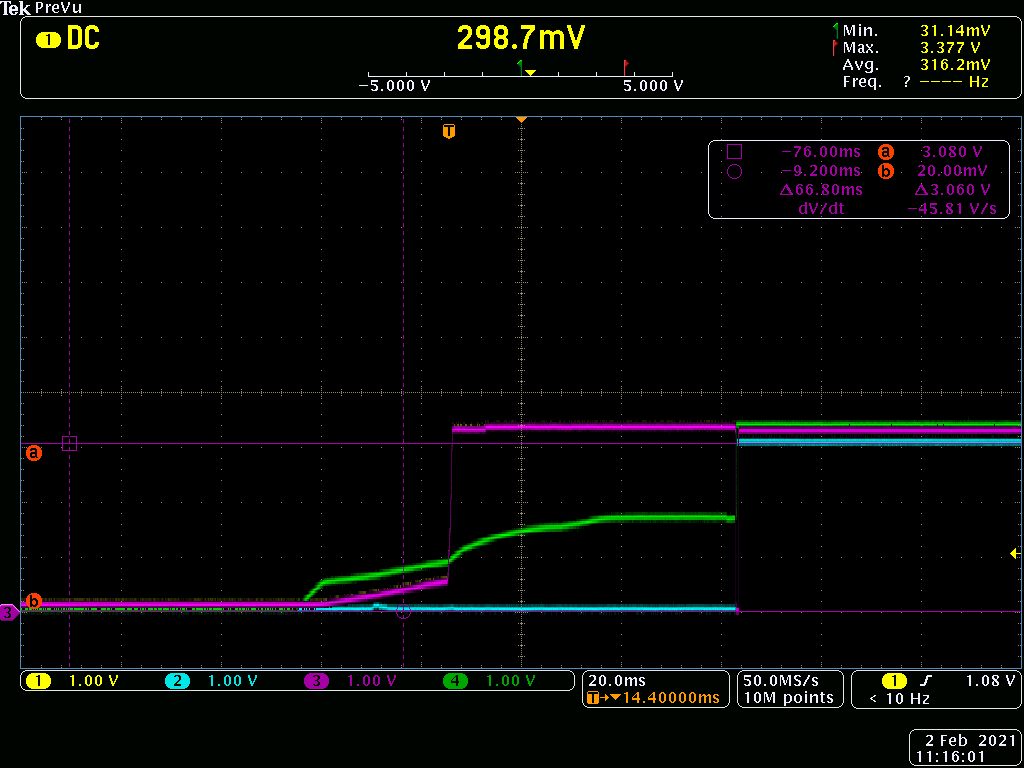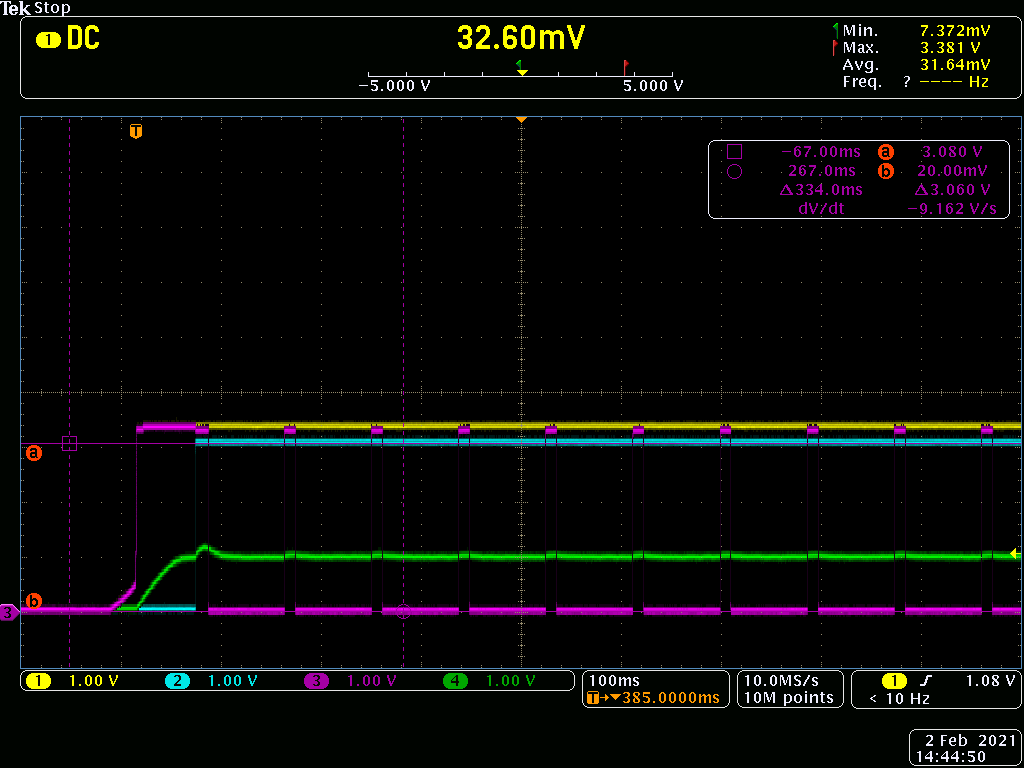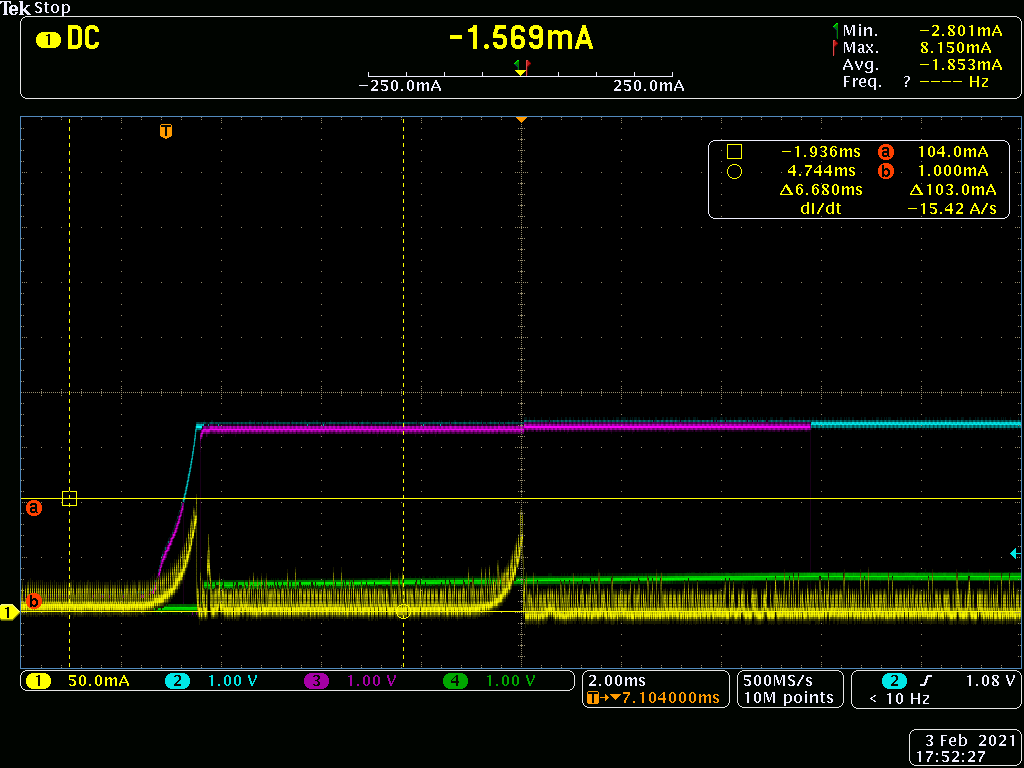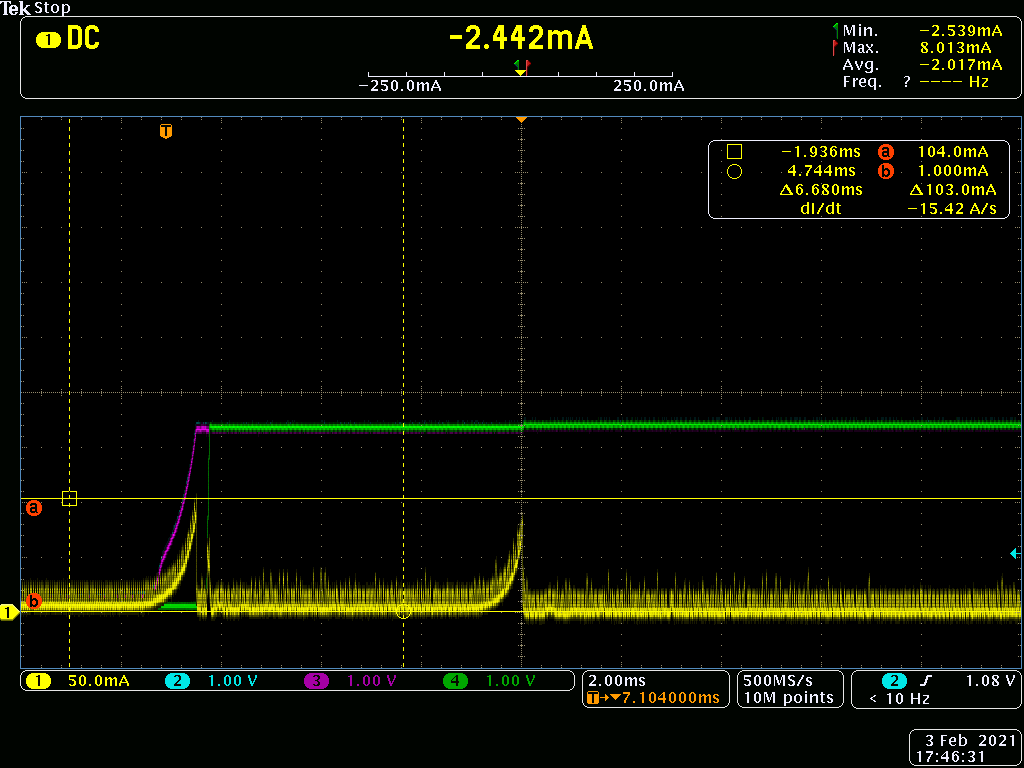Hello, I have a number of circuits using the TPS22946, and I see random startup failures on some but normal operation on others.
Tried many troubleshooting steps to see if I can get a circuit that fails to start to function properly without success.
Vin has a 1uf decoupling cap and is connected to a 3.3V rail, EN is controlled by a microcontroller, OC is pulled up to the 3.3V rail with a 10K resistor, CL pin is pulled down to GND with a 0ohm resistor. Vout has decoupling caps and goes to the VCC of another chip. This same circuit is replicated multiple times on the same board, and in most cases has no issue on startup. some circuits fail to start however. this is concerning and i would like to know if it is a design issue or some other issue (possibly assembly related?)
Here is a schematic of this circuit:
Here is a scope shot of a successful startup:
CH1 is the 3.3V rail, it is covered up by CH3
CH2 is the EN signal
CH3 is the OC signal
CH4 is the Vout
Here is a scope shot of a failed startup:
CH1 is the 3.3V rail, it is covered up by CH3
CH2 is the EN signal
CH3 is the OC signal
CH4 is the Vout






